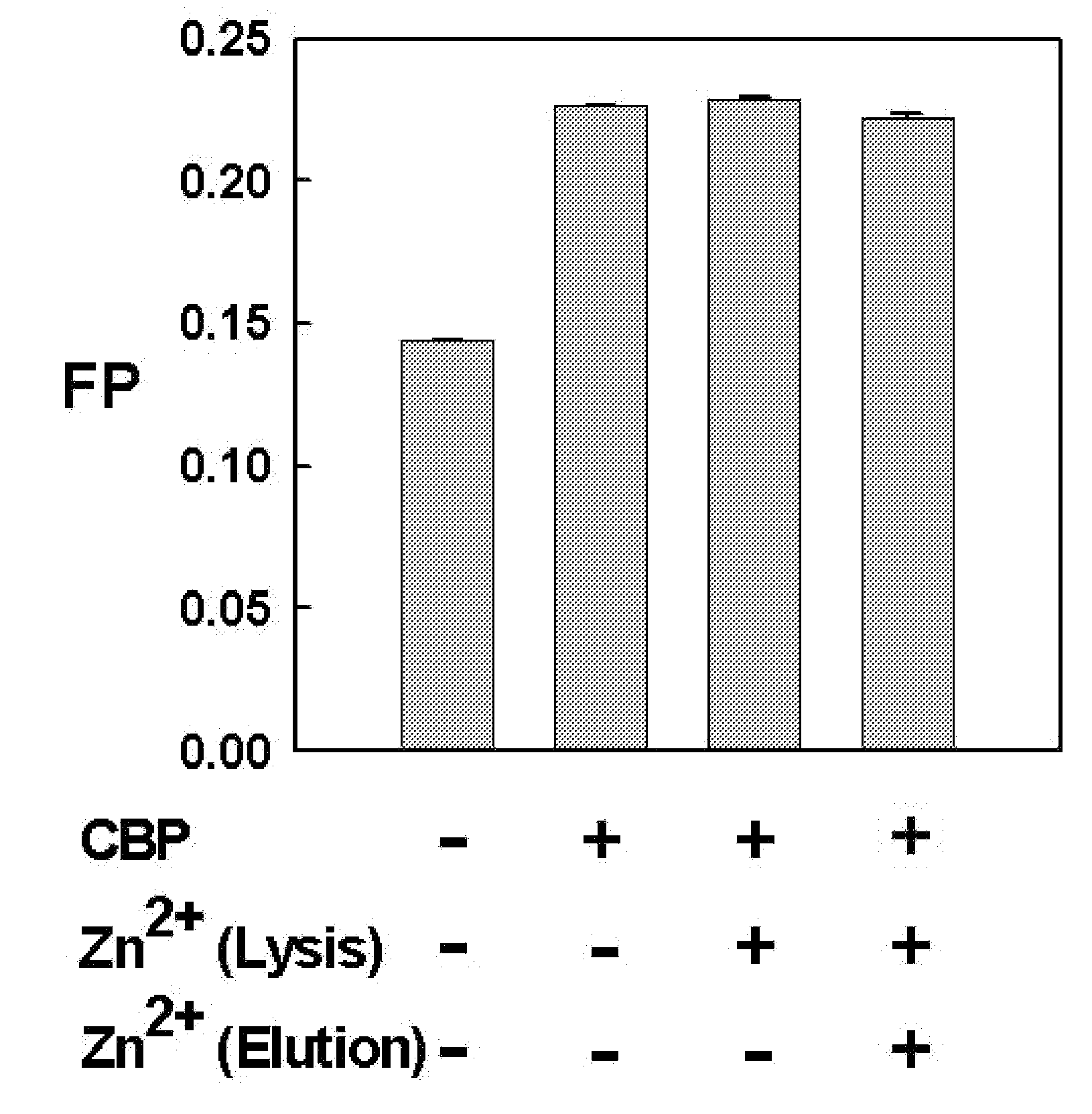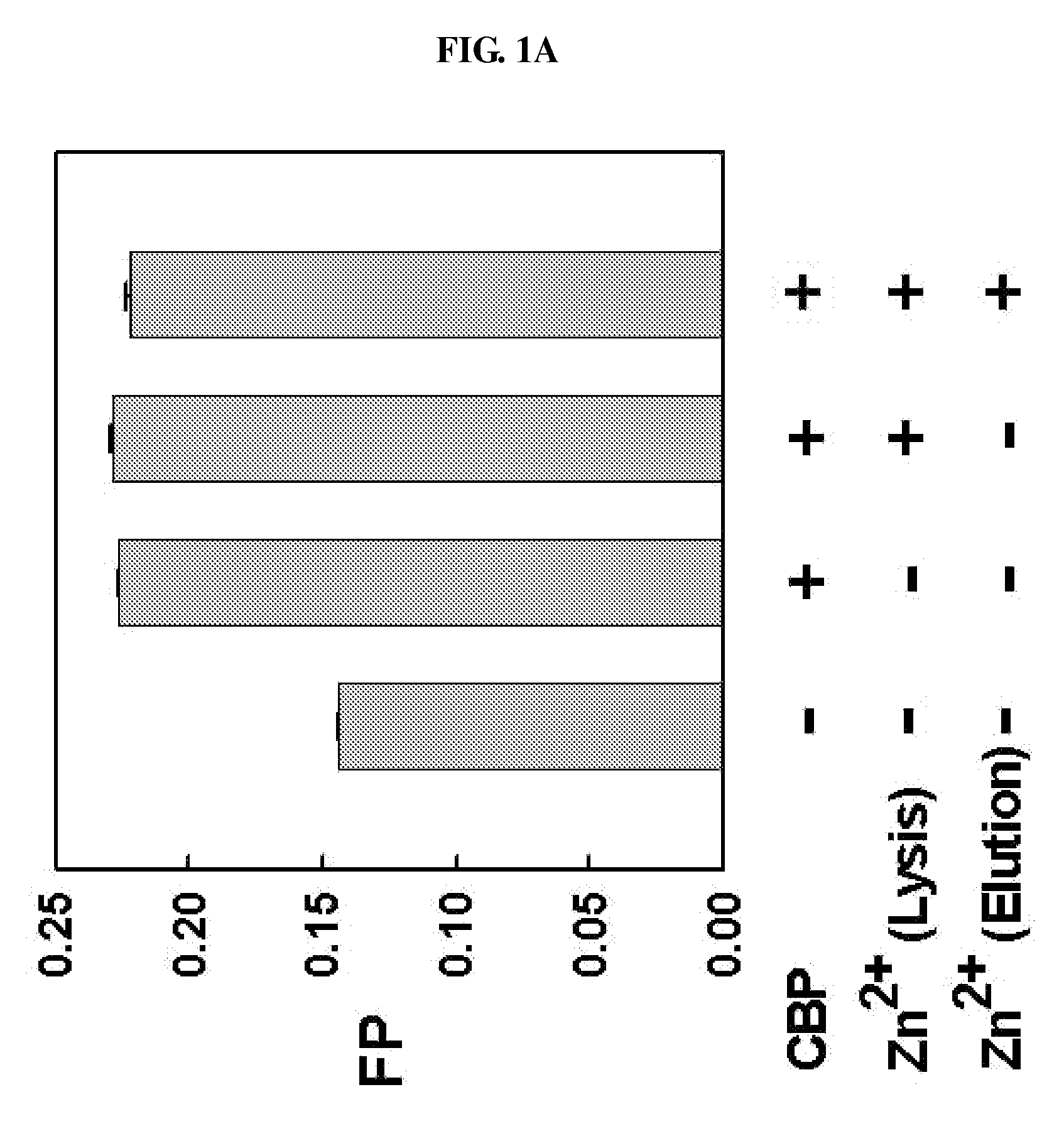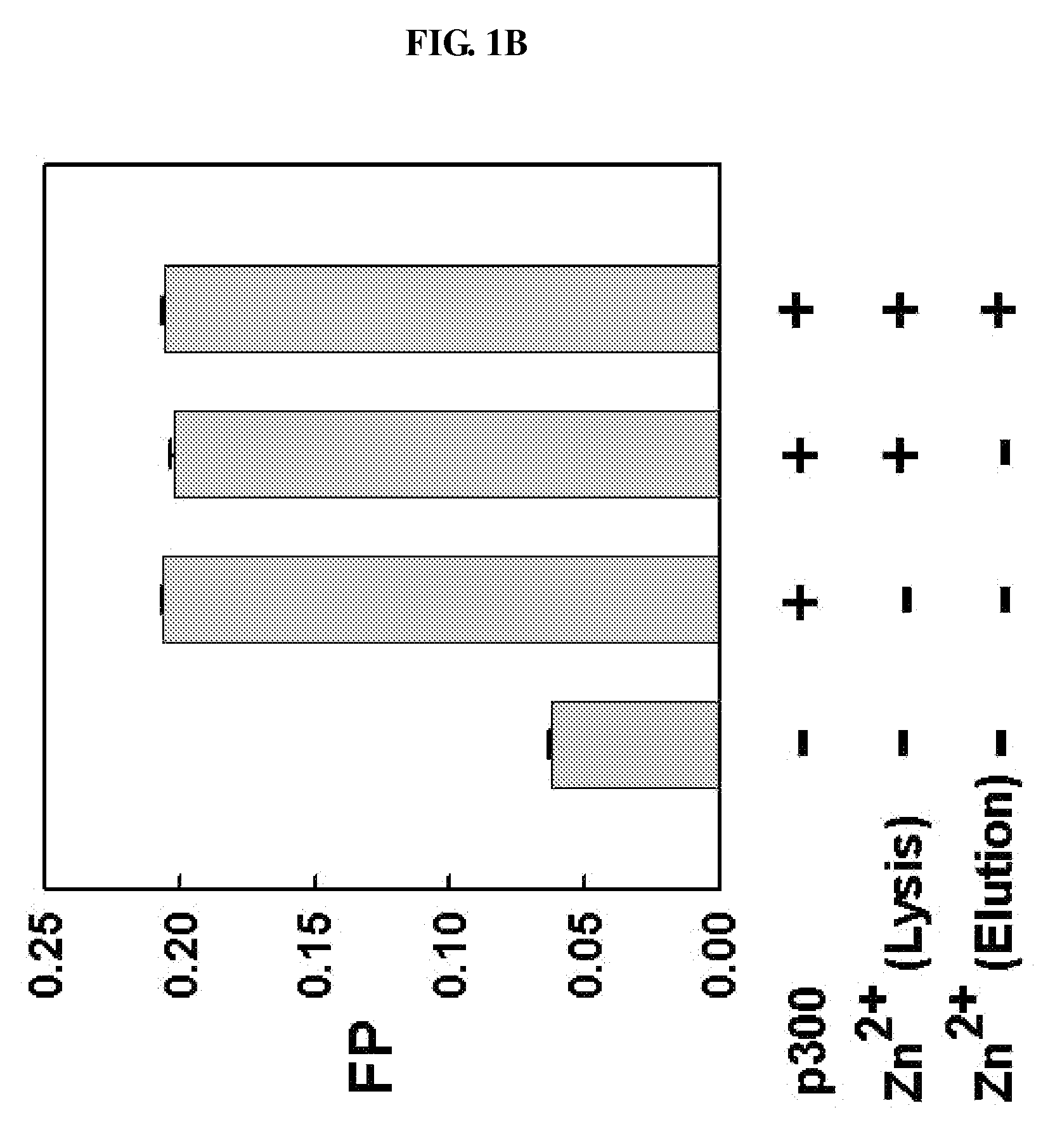METHOD FOR QUANTITATIVE ANALYSIS OF INTERACTIONS BETWEEN HIF-1ALPHA C-TERMINAL PEPTIDES AND CBP OR p300 PROTEINS AND METHOD OF SCREENING INHIBITORS USING THE SAME
a technology of c-terminal peptides and hif-1alpha c-terminal peptides, applied in the field of quantitative analysis of peptide interactions, can solve the problems of large reagent requirements, long test time, complex process,
- Summary
- Abstract
- Description
- Claims
- Application Information
AI Technical Summary
Benefits of technology
Problems solved by technology
Method used
Image
Examples
example 1
Expression and Purification of CBP and p300 Proteins
[0074]For the expression of CBP and p300 proteins, according to an embodiment of the present invention, the truncated human CBP (amino acids 1-450) including an amino acid sequence as shown in SEQ ID NO: 1 and the truncated p300 (amino acids 1-221) including an amino acid sequence as shown in SEQ ID NO: 2 were subcloned in pGEX-KG (GE Healthcare Life Sciences, USA) and pGEX-4T-1 (Amersham Biosciences, USA) vectors, respectively, and then transformed into E. coli BL21 (Novagen).
[0075]The transformed cells were cultured in Luria-Bertani (LB) broth medium containing 50 ug / ml of ampicillin until the optical density (O.D) reached 0.6 at 37° C., and they were induced by the addition of 0.5 mM IPTG (isopropyl-β-D-thiogalactopyranoside) for 15 hours at 18° C. After centrifugation, the cells were resuspended in 10 ml phosphate buffered saline (PBS, pH 7.4; 110 mM NaCl, 1 mM DTT) containing PMSF (phenylmethylsulfonyl fluoride) and lysozyme a...
example 2
Analysis of the Interaction Between Fluorescein-Labeled HIF-1α Peptides and CBP or p300 Proteins
[0077]2-1. Synthesis of Fluorescein-Labeled HIF-1α Peptides
[0078]Four fluorescein-labeled HIF-1α peptides containing the C-TAD of human HIF-1α were synthesized by conjugating FITC (fluorescein isothiocyanate) with the N-terminal insertion of an aminocaproic acid linker (Anygen, KwangJu, Korea), wherein the synthesized four peptides containing 776-826, 786-826, 776-814, and 788-822 amino acid residues were denoted as F-HIF-1α (776-826, SEQ ID NO: 3), F-HIF-1α (786-826, SEQ ID NO: 4), F-HIF-1α (776-814, SEQ ID NO: 5), and F-HIF-1α (788-822, SEQ ID NO: 6), respectively (Table 1).
TABLE 1Sequences of four fluorescein-labeled HIF-1a C-terminalpeptidesSynthesizedpeptidesTypeFITC-ACA-F-HIF-FITC-ACA-1a(776-826,SDLACRLLGQSMDESGLPQLTSYDCEVNAPIQGSRNLLQGEESEQ ID NO: 3)LLRALDQVNFITC-ACA-F-HIF-FITC-ACA-1a(786-826,SMDESGLPQLLTSYDCEVNAPIQGSRNLLQGEELLRALDQVNSEQ ID NO: 4)FITC-ACA-F-HIF-FITC-ACA-1a(776-814,S...
example 3
The Effects of Posttranslational Modifications (Hydroxylation, Nitrosation, and Phosphorylation) of HIF-1α on p300 Binding by Use of Fluorescence Polarization (FP)-Based Assay
[0089]3-1. Effect of Hydroxylation by FIH-1
[0090]Because hydroxylation on Asn-803 of HIF-1α prevents the HIF-1 transcriptional activation by inhibiting recruitment of CBP or p300 by HIF-1α (Lando, D., et al., Science, 295: 858-861, 2002), an embodiment of the present invention examined the direct hydroxylation effect of HIF-1α peptides on p300 binding by use of the FP-based assay. First, fluorescein-labeled HIF-1α peptides were treated with FIH-1 (Factor-inhibiting HIF-1) known as the enzyme that hydroxylates the specific asparagine residue of HIF-1α, and then the interaction of HIF-1α peptides with p300 was measured by use of the FP-based assay. The FIH-1 enzyme was separated and purified with the method as described below.
[0091]That is, the full-length human FIH-1 (amino acids 1-349; GenBank I.D.: AF395830) w...
PUM
| Property | Measurement | Unit |
|---|---|---|
| length | aaaaa | aaaaa |
| length | aaaaa | aaaaa |
| optical density | aaaaa | aaaaa |
Abstract
Description
Claims
Application Information
 Login to View More
Login to View More - R&D
- Intellectual Property
- Life Sciences
- Materials
- Tech Scout
- Unparalleled Data Quality
- Higher Quality Content
- 60% Fewer Hallucinations
Browse by: Latest US Patents, China's latest patents, Technical Efficacy Thesaurus, Application Domain, Technology Topic, Popular Technical Reports.
© 2025 PatSnap. All rights reserved.Legal|Privacy policy|Modern Slavery Act Transparency Statement|Sitemap|About US| Contact US: help@patsnap.com



